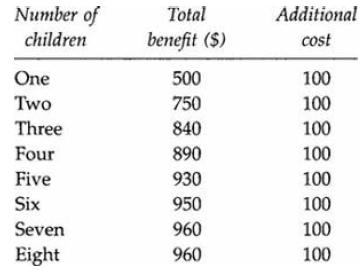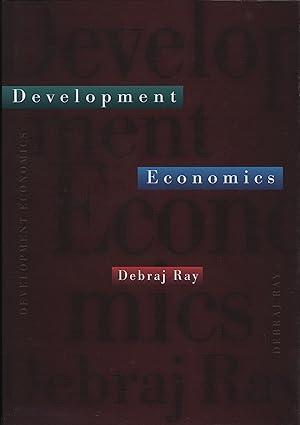This is a question on joint families, externalities, and fertility choice. Suppose that Ram and Rani are
Question:
This is a question on joint families, externalities, and fertility choice. Suppose that Ram and Rani are the heads of a nuclear family, making their fertility decisions. For simplicity, assume away gender bias and issues of child survival. The following table details the costs and benefits (in dollars, say) of different numbers of children.
(a) Based on the information in the table, how many children would Ram and Rani have in order to maximize their net benefit?
(b) Now consider two identical nuclear families: Ram and Rani (as above), and Mohan and Mona. Ram and Mohan are brothers, and the two couples form a joint family. Both couples have exactly the same costs and benefits of having children as in the table. Now suppose that 50% of the upbringing costs of each child (e.g., childcare) can be passed on to the other family. Each couple makes independent decisions, taking only its own welfare into account. Now how many children will each couple have?

(c) Explain the reason for this seemingly paradoxical result, using the concept of externalities, and try and understand why larger families (either integrated across generations or between siblings in the same generation), will tend to have a larger number of children per couple.
Step by Step Answer:






